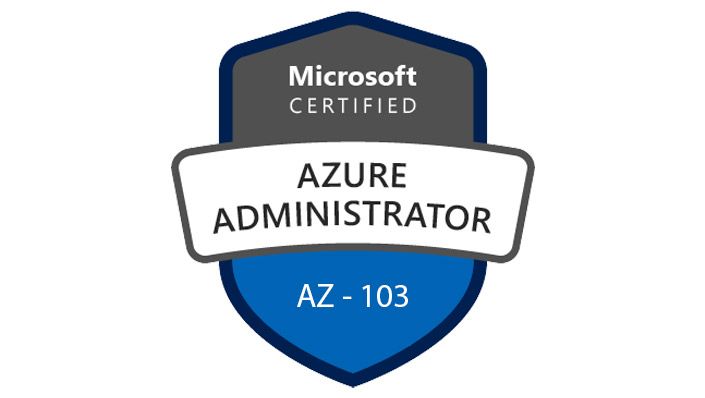
AZ-103: Microsoft Azure Administrator
Learn How to Implement and Manage Storage for the AZ-103 Microsoft Azure Administrator Exam
Audience Profile
Candidates for this exam are Azure Administrators who manage cloud services that span storage, security, networking, and compute cloud capabilities. Candidates have a deep understanding of each service across the full IT lifecycle, and take requests for infrastructure services, applications, and environments. They make recommendations on services to use for optimal performance and scale, as well as provision, size, monitor, and adjust resources as appropriate. Candidates for this exam should have proficiency in using PowerShell, the Command Line Interface, Azure Portal, ARM templates, operating systems, virtualization, cloud infrastructure, storage structures, and networking.
Skills Measured
NOTE: The bullets that appear below each of the skills measured are intended to illustrate how we are assessing that skill. This list is not definitive or exhaustive.
NOTE: In most cases, exams do NOT cover preview features, and some features will only be added to an exam when they are GA (General Availability).
Manage Azure subscriptions and resources (15-20%)
- Manage Azure subscriptions
- Analyze resource utilization and consumption
- Manage resource groups
- Managed role based access control (RBAC)
Implement and manage storage (15-20%)
- Create and configure storage accounts
- Import and export data to Azure
- Configure Azure files
- Implement Azure backup
Deploy and manage virtual machines (VMs) (15-20%)
- Create and configure a VM for Windows and Linux
- Automate deployment of VMs
- Manage Azure VM
- Manage VM backups
Configure and manage virtual networks (30-35%)
- Create connectivity between virtual networks
- Implement and manage virtual networking
- Configure name resolution
- Create and configure a Network Security Group (NSG)
- Implement Azure load balancer
- Monitor and troubleshoot virtual networking
- Integrate on premises network with Azure virtual network
Manage identities (15-20%)
- Manage Azure Active Directory (AD)
- Manage Azure AD objects (users, groups, and devices)
- Implement and manage hybrid identities
- Implement multi-factor authentication (MFA)
